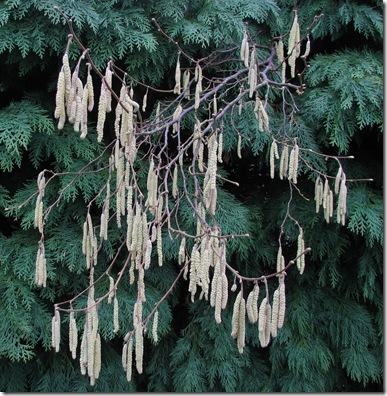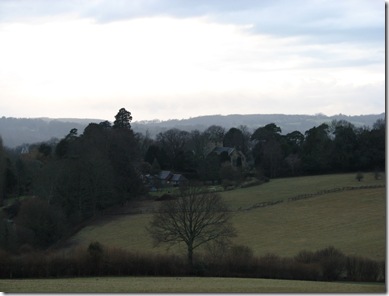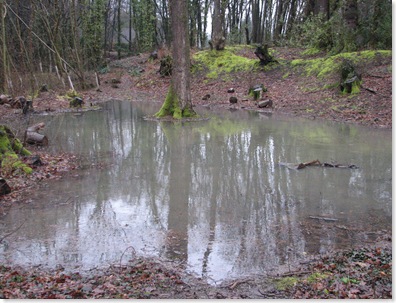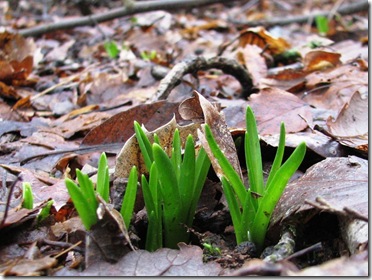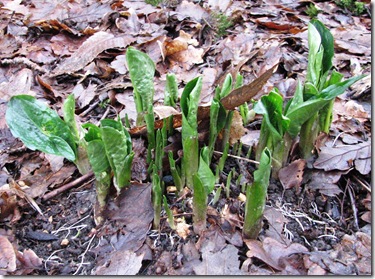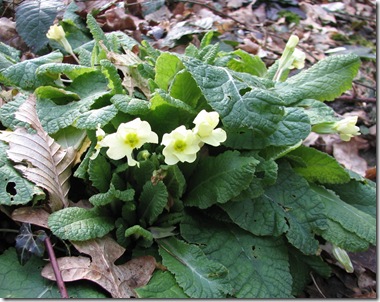Yesterday, walking through an oak and chestnut wood between Battle and Rye in the East Sussex Weald, we noticed some luminous green plants towering above the wet brown fallen leaves.
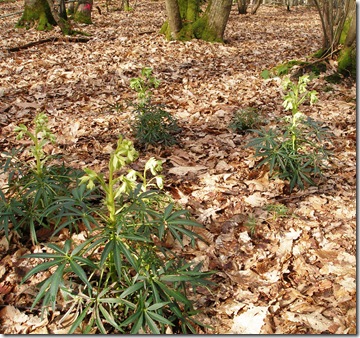
(All photos were taken by my friend Andy Redford who was with me - I left my camera at home as I did not think there would be any worthwhile subjects).
The plants were stinking hellebore or setterwort (Helleborus foetidus), a very rare species in East Sussex, and there were maybe one hundred of them large and small scattered over quite a wide area and clearly doing well.
I have walked through this piece of woodland dozens of times and not seen these plants before, nor do they seem to have been recorded by others, but they must have been here for a long time (perhaps only really obvious early in the year).
There is a story that the first hellebore grew from the spot where a little girl's tear dropped onto the snow because she had no gift for the Christ child. With all the snow and frost we have had recently and seeing these plants coming up to their best so early, it is easy to understand how such an idea arose.
Another bonus was the discovery on many of the plants of mines of the leaf mining fly Phytomyza hellebori (see below) first recorded in Britain in 2002. So far as I know this a new species for East Sussex.
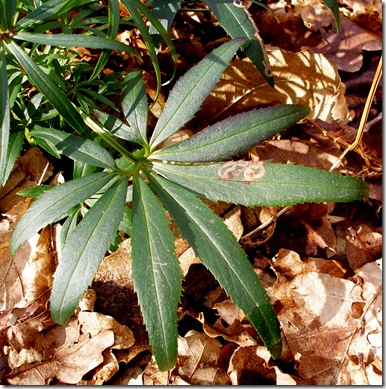
The stinking hellebore is a popular garden plant with an Award of Garden Merit from the Royal Horticultural Society. In the wild it normally grows on chalk or limestone, so the question as to whether the plant is a garden escape in this wood arises. Though I do wonder quite how it got there, there are no houses immediately adjacent and all the plants are in natural places, not in spots where garden rubbish might have been dumped.
The name 'stinking' comes from the fact that the leaves smell of decaying meat when bruised, though the flowers have a pleasant honey scent and are good for early insects, especially bumble bees. All parts though are toxic and though it has been used medicinally, the result may often have been fatal.
A moving postscript to all this is that I found a fine piece of writing on the stinking hellebore penned by my old friend Dr. Tony Hare, the founder and first chair of Plantlife:
http://www.habitat.org.uk/hare.htm
Sadly he died at an early age in January and I think this essay is a very fitting tribute to a remarkable man and a great conservationist. I know he would have been very pleased that we had stumbled upon a flourishing colony of this one of our more remarkable wild flowers.
